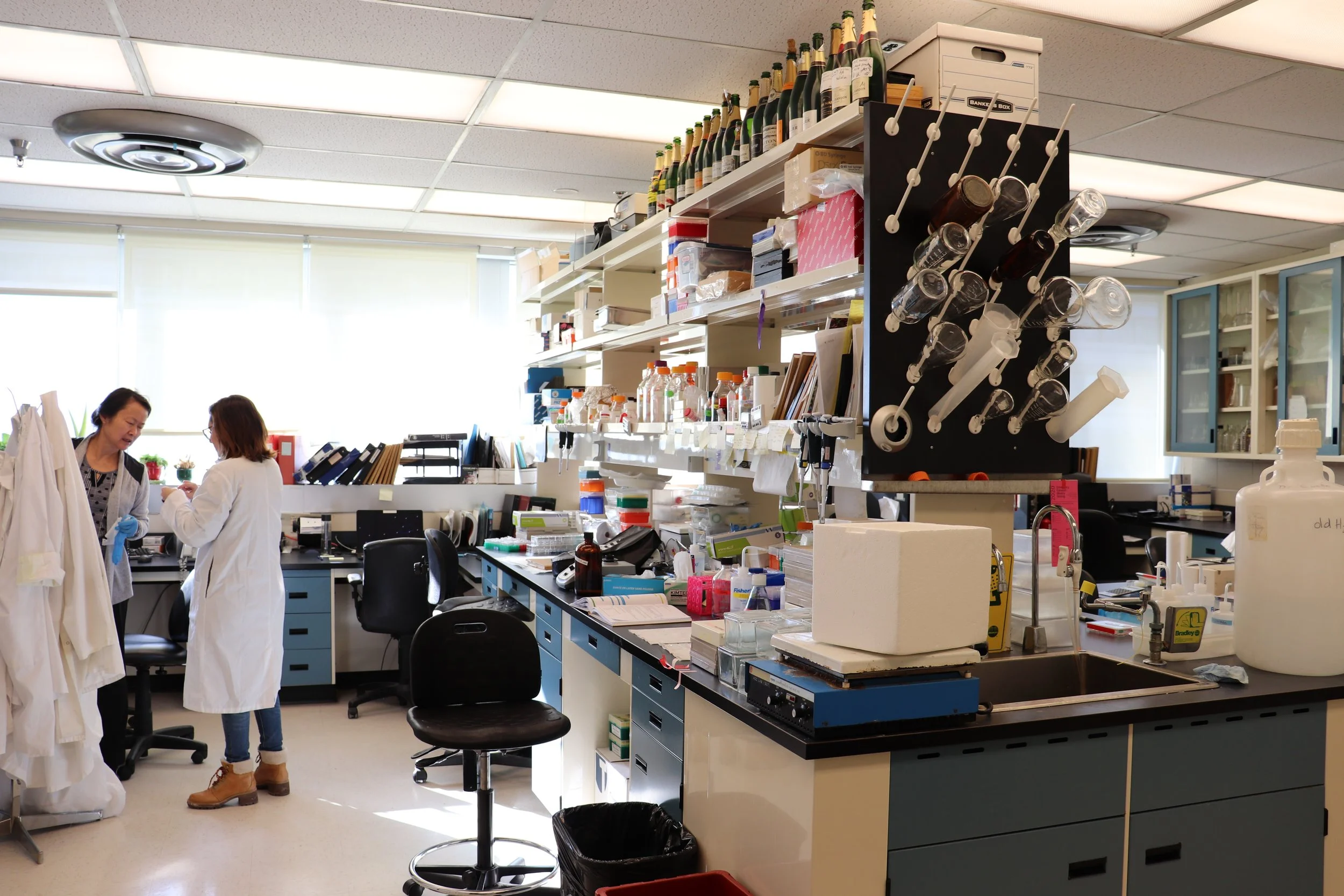
ABOUT US
Our Philosophy
The lab philosophy is to stimulate trainees to develop their fullest potential as independent investigators while establishing good networks and a collaborative spirit. To facilitate their critical thinking and in depth analyses of data, the lab developed a tradition of two weekly meetings. One is an informal gathering aimed at discussing relevant new publications and updating each other on the major tasks ahead and to resolve laboratory housekeeping issues. The other meeting is aimed at discussing in depth laboratory raw data, its significance in research and it is also aimed at discussing methodological challenges and “technique-troubleshooting”.
The research is focused predominantly -but not exclusively- on the “road maps” offered by the funded grant applications. However, when novel and unexpected data provokes new questions or new leads, these are considered as potential new areas of research if deemed of importance.
The lab is open to collaborations with national or international laboratories where the cooperation will increase the value of the undertaken research. These collaborations are based on pre-existing friendships and mutual trust. Whenever possible, the exchange of trainees/collaborators is encouraged. It is expected that trainees become experts in the performance of several techniques employed in the lab and that they assist each other in optimizing the application of these techniques.
Within the lab, we foster a spirit of openness and mutual team support. Senior graduate students and postdoctoral fellows contribute substantially to the development of the junior trainees. Projects are often shared by more than one member of the lab in order to efficiently complete research tasks by the summation of complementary expertise.
Methodologies
Our lab uses a multidisciplinary approach when investigating scientific problems. Thus, we establish a wide variety of methodologies ranging from molecular approaches to whole animal experimentations. We have created a number of transgenic animal models such as: a transgenic mice line over-expressing NGF in the stem and spinal cord; a transgenic rat line coded McGill-Thy1-APP mimicking the AD-like amyloid pathology with excellent survival and amyloid plaque formation starting 4 months of age; a rat transgenic model coded UKUR-25 with early AD-like pathology limited to the occurrence of pathological Aβ pathology and more recently a rat transgenic model displaying the full AD-like amyloid pathology with a single transgenic construct of APP with the so-called Swedish and Indiana mutations, carrying a single transgene per allele. Despite the low “transgene dose” these rats display early cognitive impairments, accumulation of Aβ peptides, amyloid plaques, CNS inflammation and dystrophic neurites. The breeding and genotyping of these models is carried out in our lab.
We use a great deal of tissue culture experimentation with established cell lines and primary cultures of neurons and glia. A number of stably transfected cell lines have been generated by our lab. Primaries cultures are often generated from dissociated cells from the cerebral cortex, hippocampus or septal nucleus.
Our lab generates monoclonal antibodies (Mabs). Examples of such are McSA1 against Aβ peptide, McKA1 against the Glutamate transporter 1; TOH against Tyrosine hydroxylase, NC1/34 against Substance P, DβH against Dopamine-β-Hydroxylase, P4C1 bi-specific antibody against substance and HRP, Y4C7 bi-specific antibody against Somatostatin and HRP. We also produced the MAP (mouse anti-HRP antibody) and RAP (rat anti –HRP antibody) that used in conjunction with a rabbit antibody against rat Fc portion of IgGs (for RAP) or a rabbit antibody against the mouse Fc portion of IgGs (for MAP) allows a clean amplification of the signal enabling the detection of low amounts of antigens.
The laboratory has a long tradition of optimizing immunohistochemical approaches for light and electron microscopy, and many of our protocols are being used at large. These immunocytochemical procedures and novel applications of the hybridoma technology are described in detail in corresponding chapters of the past best-seller manuals “Immunohistochemistry” (1983) and Immunohistochemistry II (1993) both Edited by A. C. Cuello and published by John Wiley NY. The lab uses a great deal of light, confocal and electron microscopy approaches often in collaboration with the Ribeiro-da-Silva lab. When necessary the lab resorts to micro-dissection of CNS nuclei to specific neurochemical investigations (for description of methods see ”Micro-dissection Techniques” (1983), John Wiley and Sons, ed. A.C. Cuello). An important component of the studies is the regular application of neurochemical procedures to investigate important CNS markers. Typically, there are relevant proteins such as neurotransmitter markers, enzymes and growth factors. The methods applied are Western blotting, dot blots, immunoprecipitation, zymography approaches to measure enzymatic activity.
For whole animal experiments drugs are often applied systemically or into the CNS. In the latter case by using cannulae permanently implanted in key areas of the brain and connected with an osmotic mini-pump for the steady and regulated delivery of compounds. We contributed in installing a Faculty of Medicine Animal behavior facility for testing cognitive status of mice and rats, because of drug treatment, transgenesis or both. The most regular technique is the use of the so-called Morris Water Maze for testing learning and memory. The lab also applies protocols for Novel Object Recognition and Location and Fear Conditioning Techniques.








